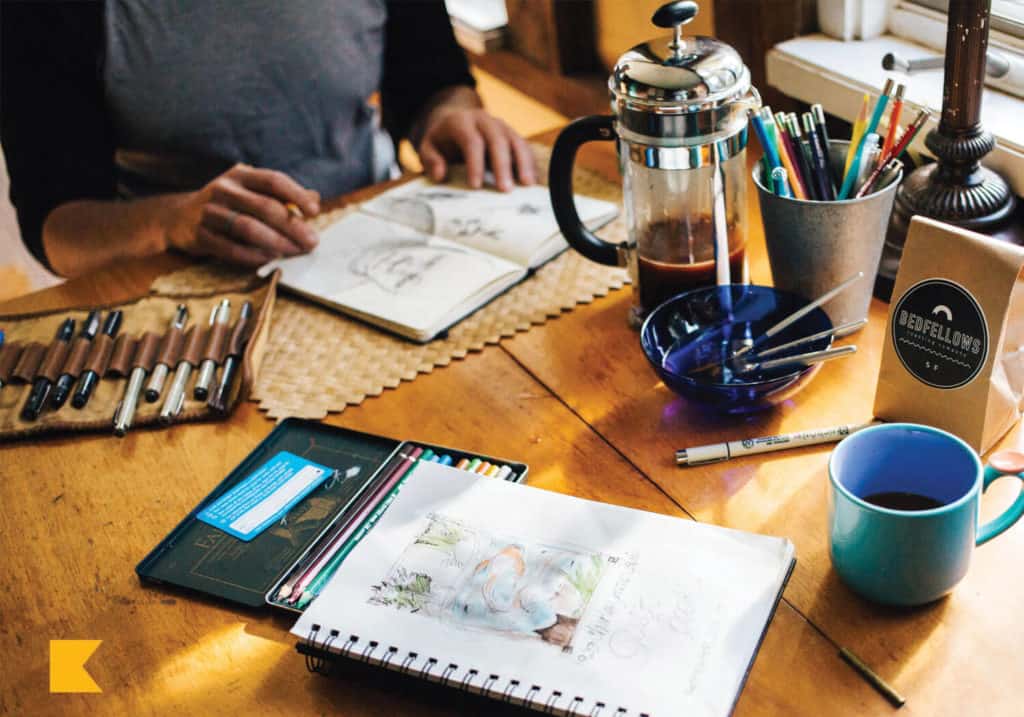In today’s fast-paced world, creativity is not just a luxury—it’s a necessity. Whether you’re a designer facing tight deadlines, a writer staring at a blank page, or an entrepreneur trying to innovate under market pressures, maintaining creativity under stress can feel nearly impossible. The good news is that pressure doesn’t have to stifle creativity. In fact, with the right strategies, it can even fuel it. Here’s how to stay creative when the stakes are high.
1. Embrace the Pressure, Don’t Fight It

The first step to staying creative under pressure is to reframe your mindset. Pressure is often perceived as a negative force that limits our thinking. However, pressure can also act as a motivator, forcing focus and pushing us out of our comfort zones. Instead of resisting stress, acknowledge it and treat it as a tool. Tell yourself: “This challenge is an opportunity to innovate.” By accepting pressure, you shift your mental energy from anxiety to action.
2. Break Problems Into Smaller Pieces
Creativity under pressure often suffers when tasks feel overwhelming. The key is to divide large, intimidating projects into smaller, manageable steps. Instead of trying to solve everything at once, focus on one aspect at a time. This approach reduces cognitive overload, freeing up mental space for creative thinking. For instance, if you’re designing a new marketing campaign, start by brainstorming ideas, then refine visuals, and finally craft the messaging. Small wins along the way build momentum and encourage innovative solutions.
3. Create a Flexible Routine
When under pressure, many people try to impose rigid schedules to control outcomes. While structure is important, too much rigidity can stifle creativity. A flexible routine allows you to work efficiently while leaving room for inspiration. Allocate blocks of time for focused work, but include periods for brainstorming, reflection, and experimentation. A short walk, doodling, or listening to music can serve as “creative resets” that help your mind recharge.
4. Use Constraints to Your Advantage

Paradoxically, constraints can actually enhance creativity. Limits force you to think differently and innovate within boundaries. Instead of seeing constraints as obstacles, treat them as creative challenges. For example, if you’re asked to produce an ad with minimal budget, focus on unique ideas that rely on clever storytelling rather than expensive visuals. Constraints sharpen your problem-solving skills and can lead to solutions you might never have discovered in a pressure-free environment.
5. Tap Into Your Support Network
Creativity doesn’t exist in isolation. When under pressure, collaboration can provide fresh perspectives and reduce mental strain. Reach out to colleagues, friends, or mentors for feedback and brainstorming. Even a brief conversation can spark new ideas or help you see a problem from a different angle. Sharing the load also reduces the feeling of being alone in your challenge, making it easier to stay mentally agile and creative.
6. Manage Stress and Prioritize Self-Care
It’s difficult to be creative when your mind is clouded by stress. Simple practices such as deep breathing, meditation, or physical exercise can significantly improve focus and mental clarity. Sleep is particularly important; a rested brain is far more capable of innovative thinking. Nourishing your body with healthy food and staying hydrated also play a subtle but crucial role in keeping your mind sharp under pressure.
7. Practice Mindfulness and Flow

Mindfulness helps you stay present and fully engaged with the task at hand, which is essential when deadlines loom. Techniques like focusing on your breath, observing thoughts without judgment, or using sensory awareness can reduce anxiety and enhance creativity. Similarly, entering a “flow state,” where you are completely immersed in your work, allows ideas to emerge naturally. This requires eliminating distractions and fully committing to the creative process, even under tight timelines.
8. Keep a Repository of Ideas
When under pressure, your brain may struggle to generate new ideas on demand. Maintaining a “creative repository”—a journal, digital notes, or a mood board—allows you to store inspiration and revisit it when needed. Having a bank of ideas to draw from reduces the cognitive load and makes it easier to adapt concepts quickly under stress.
Conclusion
Staying creative under pressure is not about eliminating stress; it’s about harnessing it. By reframing pressure as motivation, breaking down problems, maintaining flexibility, leveraging constraints, collaborating, practicing self-care, and cultivating mindfulness, you can unlock innovation even in high-stakes situations. Remember, some of the most remarkable ideas are born not in calm, but in the crucible of pressure. Embrace the challenge, and let creativity flourish.

